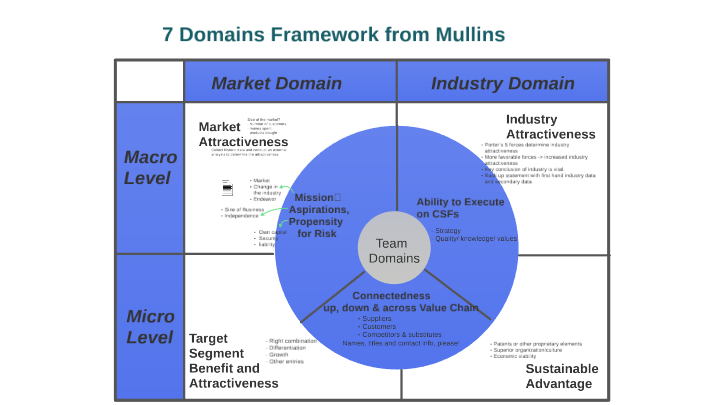How the 7 Domains Model Can Help You Analyze Your Startup Idea




Many startup businesses fail because entrepreneurs jump in without really knowing what they’re getting into. To give your startup the best possible chance of success, it’s critical that you analyze your idea from several angles.
One of the easiest ways to analyze your startup idea is to use a framework to guide you. You may already have a favorite go-to, like Porter’s Five Forces or PESTLE. Our Belighted team often turns to the tried-and-true Lean Canvas and Product Canvas frameworks.
But it’s always beneficial to examine your ideas from different viewpoints—which is why you should check out the 7 Domains Model. Developed by John Mullins, a professor at London Business School, this framework offers entrepreneurs a unique and interesting perspective when trying to filter out viable business ideas from ones that are likely to flop.
We’ll show how this framework can help startup founders look at their ideas with a critical eye, without putting in weeks of research.
In simple terms, the 7 Domains Model helps entrepreneurs decide whether a business idea is viable and marketable. The model divides your idea into seven parts (domains) for analysis. The first four involve micro and macro analyses of your market and industry, while the remaining three consider company-level factors.

The 7 Domains Model helps you put your proposed idea under a microscope and anticipate the potential challenges and problems you might encounter. This will let you proactively prepare solutions or figure out how to shift directions, if necessary.
Let’s drill down into each of the 7 domains and look at the questions the model asks you to think about. We’ll break these into the three categories of market, industry, and team.
This domain encompasses the whole market. The intention here is to look at the market from a wide perspective and figure out how your new product or service will fit in. Here are a some questions to consider:
The market is made up of a variety of consumers and you can’t please everyone. So in this step, you have to get specific about your buyers. Decide on the sector of the market you’re going to target by thinking about the following:
Here, you’ll step back to look at the bigger picture of the industry you want to compete in, examining things like level of competition and ease of entry. Things you’ll want to think about include:
If you’re not quite sure how to get meaning and useful answers to these questions, Porter’s Five Forces can be a helpful tool.
This stage involves going a little deeper into the analysis of your chosen industry and your prospective competitors. Think about the uniqueness and staying power of your business. Here are some things to consider:
This domain gets personal by focusing on your commitment, values, and goals, as well as those of your teammates. Think about:
In this step, you need to specify critical success factors (CSFs): high-level goals that are critical for your business to reach in order to succeed. You’ll also have to think about whether your team is able to deliver. Some questions you should ask yourself are:
This last domain is all about relationships—a vital factor in every entrepreneurial venture. Here, you have to look at your connections, from customers to investors to suppliers to competition, and how they’ll affect your business. Think about the following:
At Belighted, we believe a good road map is the foundation of every client project we undertake. Chat with us to find out how we can design a product to help you get exactly where you want to go.